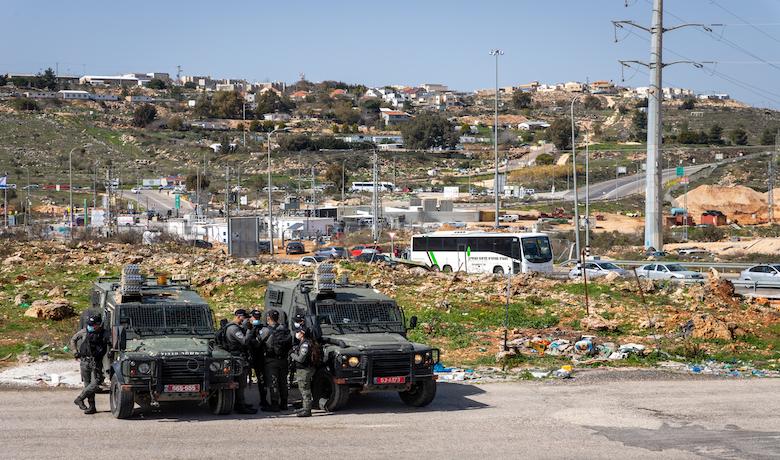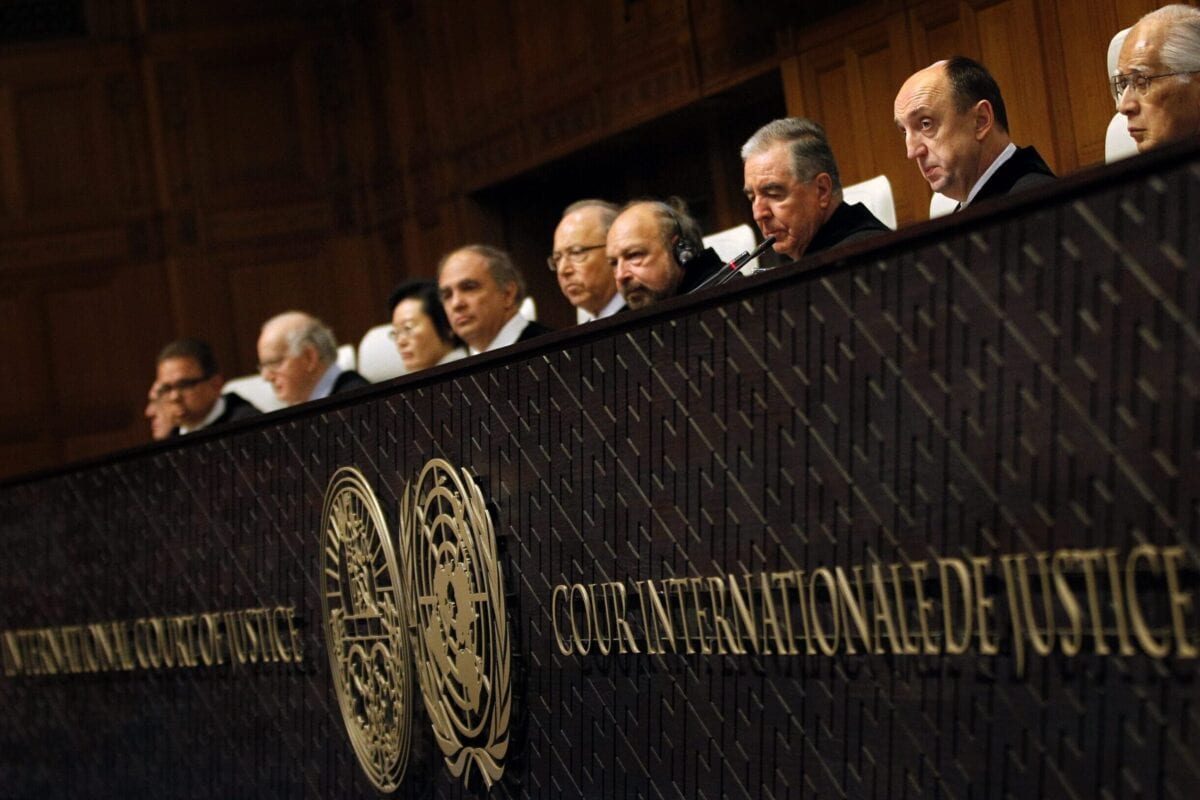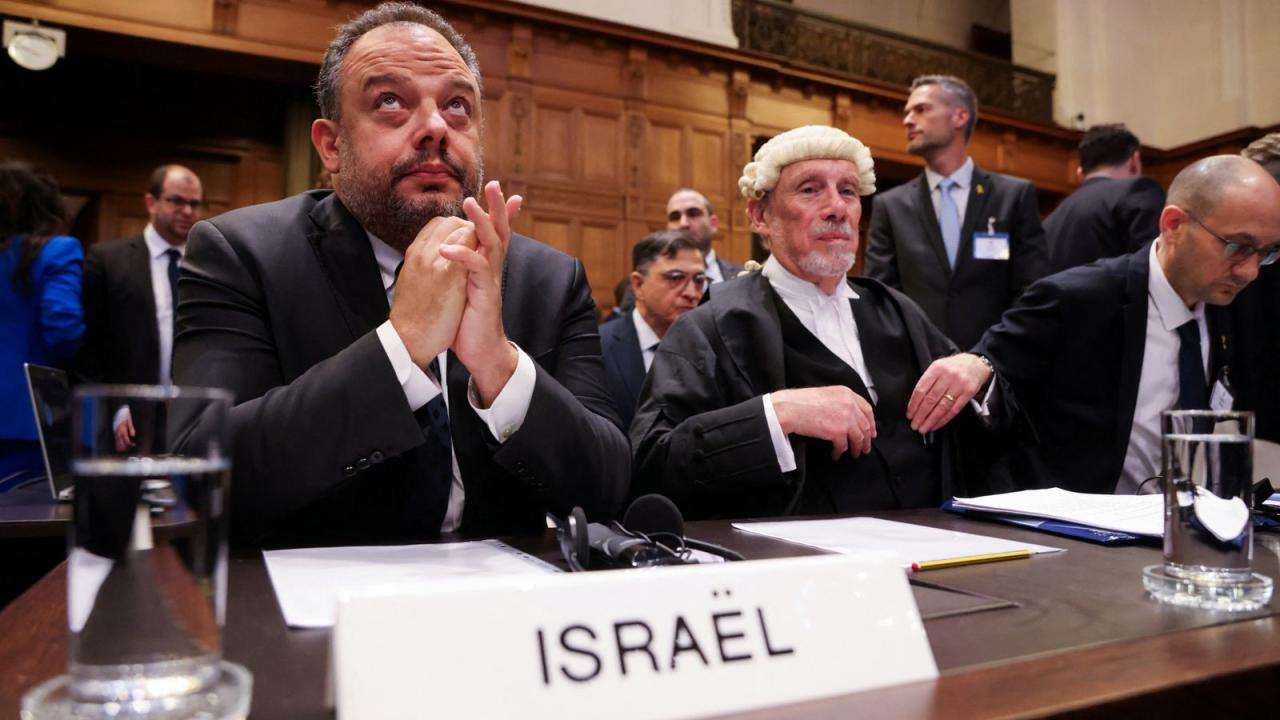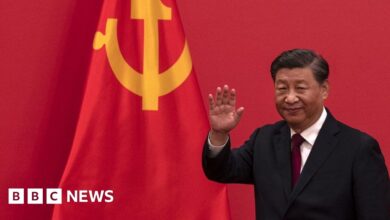
The World Court Says Israels Occupation Is Illegal
The world court says israels occupation is illegal – The World Court says Israel’s occupation is illegal – a bombshell ruling that has sent shockwaves through the international community. For decades, the Israeli-Palestinian conflict has been a simmering pot of unresolved issues, legal battles, and humanitarian crises. This landmark decision by the International Court of Justice (ICJ) throws a new wrench into the already complex machinery of peace negotiations, prompting a flurry of reactions, both supportive and condemnatory, from across the globe.
This isn’t just a legal battle; it’s a fight for human rights, self-determination, and the very future of the region.
The ICJ’s advisory opinion, based on years of legal arguments and evidence, declared Israel’s occupation of Palestinian territories illegal. This detailed analysis delves into the historical context, examining key events and past international rulings that have shaped the current situation. We’ll explore the legal arguments underpinning the ICJ’s decision, contrasting different interpretations from legal experts and policymakers. We’ll also examine the immediate and potential long-term consequences, including the impact on the daily lives of Palestinians, the future of peace negotiations, and the broader implications for international law.
Historical Context of the Israeli-Palestinian Conflict

The Israeli-Palestinian conflict is a deeply rooted and complex issue with a long and often violent history. Understanding the current situation requires examining the key events and international legal decisions that have shaped the conflict over the past century. This historical context is crucial for interpreting the recent World Court ruling and understanding the perspectives of both sides.The conflict’s roots lie in competing claims to the same territory, a land sacred to both Jews and Muslims.
The late 19th and early 20th centuries saw increasing Zionist immigration to Palestine, then under Ottoman rule, fueled by a desire to establish a Jewish homeland after centuries of diaspora. Simultaneously, the Arab population of Palestine, already present for centuries, saw this influx as a threat to their own existence and land rights.
The British Mandate and the 1947 UN Partition Plan
Following World War I, the Ottoman Empire collapsed, and Palestine came under British Mandate rule. The British administration struggled to balance the competing claims of the Jewish and Arab populations. In 1947, the United Nations General Assembly adopted Resolution 181, proposing a partition plan that divided Palestine into separate Arab and Jewish states, with Jerusalem under international administration.
This plan, however, was not accepted by the Arab leadership, leading to the 1948 Arab-Israeli War.
The 1948 Arab-Israeli War and its Consequences
The 1948 war resulted in the establishment of the State of Israel and the displacement of a large number of Palestinians, an event Palestinians refer to as the “Nakba” (catastrophe). The war left unresolved borders and a large Palestinian refugee population, creating a lasting source of conflict. The subsequent wars of 1967 (Six-Day War) and 1973 further solidified Israeli control over significant territories claimed by Palestinians.
International Legal Decisions and the Occupation
Following the 1967 war, Israel occupied the West Bank, Gaza Strip, and East Jerusalem. The legality of this occupation has been a central point of contention. The Fourth Geneva Convention, ratified by Israel, prohibits the occupying power from transferring its own civilian population into occupied territory. Despite this, Israel has established numerous settlements in the occupied territories, a practice widely condemned by the international community.
Timeline of Significant International Rulings
- 1974: UN General Assembly Resolution 3236 defines Zionism as a form of racism and racial discrimination. This resolution was later revoked.
- 1980: The UN Security Council condemns Israel’s annexation of Jerusalem.
- 2004: The International Court of Justice (ICJ) Advisory Opinion on the Legal Consequences of the Construction of a Wall in the Occupied Palestinian Territory states that the construction of the wall is illegal under international law.
- 2023: The International Court of Justice issues an advisory opinion declaring that Israel’s occupation of Palestinian territory is illegal.
Historical Arguments: Israel and Palestine
Israel’s historical arguments often center on biblical claims to the land, the need for a secure Jewish homeland after the Holocaust, and the right to self-defense. Palestinians, on the other hand, emphasize their historical presence in the land, the illegality of the occupation under international law, and the right of return for Palestinian refugees displaced in 1948 and subsequent conflicts.
Both sides draw upon historical narratives and interpretations of international law to justify their claims.
The World Court’s Ruling: The World Court Says Israels Occupation Is Illegal

The International Court of Justice’s (ICJ) advisory opinion on the legal consequences of Israel’s construction of a wall in the Occupied Palestinian Territory, delivered in 2004, laid the groundwork for its more recent pronouncements on the legality of the occupation itself. While not directly addressing the entire occupation in 2004, the 2004 opinion established crucial legal precedents that significantly informed the 2023 advisory opinion.
The World Court’s ruling declaring Israel’s occupation illegal has sparked intense debate globally. It’s a complex issue with far-reaching consequences, making me think about the diverse communities closer to home, like those profiled on this great site detailing nh cities and towns , and how even in seemingly quiet places, we grapple with issues of justice and international relations.
The implications of the court’s decision are far-reaching, impacting everything from international law to regional stability.
The 2023 ruling builds upon these earlier findings, offering a more comprehensive assessment of the legality of the Israeli occupation under international law.The ICJ’s 2023 advisory opinion on the legality of Israel’s occupation of the Palestinian Territory occupied since 1967, including East Jerusalem, rests on several key legal arguments. The court primarily relied on the principles of international humanitarian law (IHL), specifically the Fourth Geneva Convention relative to the Protection of Civilian Persons in Time of War, and the overarching principle of self-determination enshrined in the UN Charter.
The Court reaffirmed the illegality of the occupation itself, going beyond the 2004 wall opinion to address the broader context.
Key Provisions of the ICJ’s Advisory Opinion
The ICJ’s advisory opinion declared that Israel’s ongoing occupation of Palestinian territories is illegal under international law. This determination stems from the Court’s finding that Israel’s actions violate numerous provisions of international law, including the Fourth Geneva Convention. The opinion specifically addressed Israel’s control over Palestinian land, its settlement activities, and its restrictions on Palestinian movement and access to resources.
The Court emphasized that Israel’s actions constitute a violation of the Palestinian people’s right to self-determination. The opinion also underscored the responsibility of all states to refrain from recognizing or assisting in maintaining the illegal situation. Crucially, the advisory opinion doesn’t possess binding legal force, but it holds significant moral and political weight, influencing international perceptions and potentially impacting future legal actions.
Differing Interpretations of the Ruling, The world court says israels occupation is illegal
Legal scholars and international relations experts hold diverse interpretations of the ICJ’s ruling. Some view the opinion as a strong condemnation of Israel’s actions, emphasizing the clarity of the court’s findings and the weight of international legal precedent cited. They argue the opinion reinforces existing international legal norms regarding occupation and the protection of civilian populations. Conversely, others are more cautious, highlighting the advisory nature of the opinion and its limited enforceability.
These scholars emphasize the complexities of the Israeli-Palestinian conflict and the potential for the ruling to further inflame tensions rather than contribute to a peaceful resolution. Some critics also point to the perceived bias within the ICJ, questioning the impartiality of the court’s proceedings. The debate underscores the inherent complexities of international law and the challenges in applying it to deeply contested geopolitical situations.
The lack of immediate tangible consequences following the ruling has also fuelled some of the more skeptical interpretations.
International Reactions and Responses to the Ruling

The International Court of Justice’s (ICJ) advisory opinion on the Israeli occupation sparked a wave of diverse and often sharply contrasting reactions across the globe. The ruling, while non-binding, ignited a renewed debate on international law, the Israeli-Palestinian conflict, and the role of international bodies in addressing complex geopolitical issues. The responses ranged from strong support to outright rejection, reflecting the deeply entrenched positions and geopolitical interests of various actors.The differing responses highlight the deep divisions within the international community regarding the Israeli-Palestinian conflict and the effectiveness of international legal mechanisms in resolving it.
Understanding these reactions provides crucial insight into the ongoing complexities of the situation and the challenges faced in achieving a lasting peace.
Official Responses of Major World Powers
The major world powers exhibited a range of responses, largely reflecting their pre-existing relationships with Israel and Palestine. The United States, a staunch ally of Israel, rejected the ICJ’s opinion, stating that it was “unacceptable” and would not affect its policies towards Israel. The European Union, while acknowledging the court’s opinion, adopted a more nuanced approach, emphasizing the need for a negotiated two-state solution and urging both sides to refrain from actions that could escalate tensions.
Russia, while not explicitly endorsing or rejecting the ruling, expressed concern about the potential for further escalation of the conflict. China, meanwhile, called for a peaceful resolution based on international law and relevant UN resolutions, a position generally supportive of the Palestinian perspective.
The World Court’s ruling declaring Israel’s occupation illegal highlights the complex web of geopolitical issues. Understanding the financial underpinnings of conflict is crucial, and that’s why I found the article on inside the secret oil trade that funds Iran’s wars so compelling. It really puts into perspective how illicit funding can fuel conflict, and how the court’s decision might impact the broader picture of international relations and resource control.
The illegal occupation, it seems, is just one piece of a much larger puzzle.
Reactions of Regional Organizations
Regional organizations largely reflected the prevailing sentiments within their constituent member states. The Arab League, for example, strongly supported the ICJ’s ruling, viewing it as a vindication of the Palestinian position and a condemnation of Israeli occupation policies. The African Union, while not issuing a unified statement, saw several member states expressing support for the Palestinian cause and the ICJ’s opinion, reflecting the widespread sympathy for the Palestinian struggle across much of the African continent.
International Responses Categorized by Support/Opposition
| Country/Organization | Response Type | Justification | Impact |
|---|---|---|---|
| United States | Rejection | Considered the ruling unacceptable and stated it would not alter its policy towards Israel, citing its commitment to Israel’s security and its belief that the conflict should be resolved through direct negotiations. | Reinforced existing divisions and highlighted the limitations of the ICJ’s influence on US foreign policy. |
| European Union | Nuanced Acknowledgement | Acknowledged the ruling but emphasized the need for a negotiated two-state solution based on international law and relevant UN resolutions. | Showed a commitment to international law while attempting to maintain a balanced approach. |
| Russia | Concerned Observation | Expressed concern about the potential for further escalation of the conflict, without explicitly endorsing or rejecting the ruling. | A neutral stance that reflected Russia’s complex relationship with both Israel and Palestine. |
| China | Implicit Support | Called for a peaceful resolution based on international law and relevant UN resolutions, aligning with the Palestinian narrative. | Showed China’s growing influence in international affairs and its support for the Palestinian cause. |
| Arab League | Strong Support | Viewed the ruling as a vindication of the Palestinian position and a condemnation of Israeli occupation policies. | Strengthened the Palestinian narrative within the Arab world and bolstered calls for international pressure on Israel. |
| African Union | Mixed Support | Several member states expressed support for the Palestinian cause and the ICJ’s opinion, reflecting the widespread sympathy for the Palestinian struggle across much of the African continent. No unified statement was issued. | Indicated widespread African support for Palestine, while highlighting the challenges of achieving consensus within the AU. |
Impact on the Ground
The World Court’s advisory opinion declaring Israel’s occupation illegal carries significant weight, but its impact on the ground is complex and multifaceted. While the ruling doesn’t automatically change the reality on the ground, it could potentially influence the daily lives of Palestinians and the trajectory of the Israeli-Palestinian conflict. The opinion provides a powerful legal framework for future actions and negotiations, though the translation of legal pronouncements into tangible improvements for Palestinians remains a considerable challenge.The ruling’s impact on Palestinians living under occupation is primarily felt through the lens of hope and potential legal recourse.
For years, Palestinians have endured restrictions on movement, access to resources, and basic human rights. The advisory opinion offers a powerful legal basis for challenging these injustices in international forums and potentially strengthens their claims for redress. However, the immediate tangible changes on the ground are likely to be limited, as the enforcement of the ruling relies heavily on the willingness of states and international actors to act upon it.
The World Court’s ruling declaring Israel’s occupation illegal is a significant development, prompting reflection on the complexities of international law and justice. Thinking about the historical context, I was reminded of the insightful work on similar themes of systemic inequality, which you can explore by reading about revisiting the work of Donald Harris, father of Kamala.
His research offers a valuable perspective on the long-term impacts of such legal decisions and their social ramifications, making the World Court’s statement on Israel even more poignant.
This leaves many Palestinians feeling a sense of cautious optimism, aware that the path to genuine change remains long and arduous.
Daily Life Impacts for Palestinians
The World Court’s ruling, while not immediately altering the physical reality of occupation, provides a legal framework that could indirectly influence daily life for Palestinians. For example, the opinion could strengthen arguments against settlement expansion, potentially leading to increased scrutiny and pressure on Israel to halt construction in occupied territories. This, in turn, could affect Palestinian access to land and resources.
Similarly, the ruling might bolster efforts to improve the humanitarian situation by focusing attention on the violations of international humanitarian law that the opinion highlights. While the effects may be gradual and indirect, the ruling offers a legal shield and potential leverage for Palestinians seeking improved conditions. Increased international attention, prompted by the ruling, might lead to greater humanitarian aid and pressure on Israel to respect Palestinian rights.
However, the actual changes will depend on the actions of various actors, including the international community and the Israeli government.
Consequences for the Peace Process
The advisory opinion’s impact on the peace process is uncertain and highly contested. Some argue that the ruling could further entrench existing divisions and make negotiations even more difficult, with Israel likely to reject the court’s legitimacy and Palestinians potentially becoming less inclined to compromise. Others believe that the ruling could create a new framework for negotiations, providing a clear legal basis for discussions on the status of occupied territories and the rights of Palestinians.
The potential for both scenarios highlights the complex and unpredictable nature of the situation. A realistic assessment suggests that the ruling’s influence on the peace process will depend largely on the political will of both sides, and the response of the international community. Past experience demonstrates that legal pronouncements alone rarely resolve deep-seated political conflicts.
Implications for International Humanitarian Law
The World Court’s decision has profound implications for international humanitarian law and the enforcement of international legal decisions. The opinion reinforces the principle that occupation must adhere to international law, including the Fourth Geneva Convention. By explicitly declaring Israel’s actions illegal, the court sends a strong message to states and international organizations about their responsibility to uphold international law and hold occupying powers accountable.
However, the actual enforcement of the ruling poses a major challenge. The effectiveness of international law hinges on the willingness of states to act, and the lack of a robust enforcement mechanism for international court decisions remains a significant obstacle. The case serves as a test of the international community’s commitment to upholding international humanitarian law and holding powerful states accountable.
The response, or lack thereof, will have significant implications for the future application of international law in similar situations.
Future Implications and Potential Pathways Forward
The ICJ advisory opinion on the Israeli occupation has thrown a significant wrench into the already complex Israeli-Palestinian conflict. The ruling’s impact will be felt far beyond the immediate reactions, shaping the future trajectory of the conflict through various potential scenarios, depending largely on the responses of involved parties and the international community. Understanding these potential pathways is crucial for anticipating future developments and working towards a more peaceful resolution.The ruling’s long-term implications depend heavily on the actions taken by Israel, Palestine, and other key international actors.
Failure to address the core issues raised by the court could exacerbate tensions, leading to further conflict and instability. Conversely, a constructive response, characterized by dialogue and a willingness to compromise, could open up avenues for a more just and lasting peace.
Potential Scenarios Based on Different Responses to the ICJ Ruling
Several distinct scenarios could unfold depending on the response to the ICJ advisory opinion. One scenario involves Israel rejecting the ruling outright, leading to increased international isolation and potential sanctions. This could further entrench the existing power imbalance and fuel Palestinian resentment, possibly escalating violence. Conversely, a scenario of partial compliance, perhaps focusing on specific aspects of the ruling while resisting others, might lead to a protracted period of tension and negotiation.
Finally, a scenario of full compliance, though unlikely in the short term, could lead to significant changes on the ground, paving the way for meaningful negotiations and a potential two-state solution. The likelihood of each scenario hinges on the political will of involved actors and the pressure exerted by the international community.
Increased International Pressure on Israel: A Detailed Scenario
A strong international response to the ICJ ruling could significantly increase pressure on Israel. This pressure could manifest in several ways. For instance, the European Union might expand its restrictions on trade with Israeli settlements, mirroring the existing policies of some member states. The United States, while unlikely to impose direct sanctions, could face increasing domestic pressure to reconsider its unwavering support for Israel’s policies, potentially leading to shifts in US foreign policy.
Furthermore, international organizations like the UN could increase their scrutiny of Israeli actions in the occupied territories, potentially leading to further resolutions condemning Israeli policies. This scenario is not without precedent; international pressure has previously influenced Israeli policy, albeit to a limited extent. The effectiveness of this pressure, however, will depend on the level of international consensus and the willingness of key actors to translate words into concrete actions.
A Hypothetical Plan for Peaceful Resolution Based on the ICJ Ruling’s Implications
A peaceful resolution requires a multi-pronged approach rooted in the ICJ ruling’s implications. This plan would necessitate a renewed commitment to international law and a willingness to address the core issues of the conflict. First, a comprehensive ceasefire would be essential, establishing a period of calm to facilitate negotiations. Second, the plan would involve the establishment of an independent international commission to monitor compliance with international humanitarian law and human rights standards in the occupied territories.
Third, serious negotiations between Israel and Palestine, mediated by an international body with the mandate to ensure impartiality, would be crucial. This negotiation process should focus on the establishment of a viable Palestinian state based on the pre-1967 borders, with mutually agreed-upon land swaps and adjustments. Finally, the plan would require international financial and logistical support for the reconstruction of Palestinian infrastructure and the creation of a sustainable Palestinian economy.
The success of this plan relies on a combination of strong international pressure, the willingness of both sides to engage in good faith negotiations, and a commitment to finding a mutually acceptable solution based on international law and principles of justice.
Visual Representation of Key Data
Visualizing the complex realities of the Israeli-Palestinian conflict is crucial for understanding its multifaceted nature. Static images, while limited in their ability to capture the dynamic nature of the conflict, can still effectively highlight key geographical and political aspects. The following descriptions aim to create a mental picture of these complex issues.
Geographical Distribution of Israeli Settlements in the West Bank
Imagine a map of the West Bank, a territory largely comprised of rolling hills and valleys. Superimposed on this landscape are numerous clusters of light-grey dots, representing Israeli settlements. These dots are not evenly distributed. Some areas, particularly along major roads and near existing Israeli infrastructure, show a higher concentration of settlements, appearing as larger, denser clusters. These areas would have a higher population density within the settlements themselves.
In contrast, other regions have fewer, more isolated settlements, indicating a lower population density. Crucially, many of these grey dots are positioned in close proximity to darker-green areas, representing Palestinian towns and villages. This visual representation starkly illustrates the interwoven, and often tense, relationship between Israeli settlements and Palestinian communities, highlighting the fragmentation of Palestinian land and the challenges to their territorial contiguity.
The proximity suggests potential friction points and highlights the physical limitations on Palestinian movement and development. The size of the grey dots could vary to represent settlement size, further illustrating the varying population densities.
Relationships Between Key Actors in the Israeli-Palestinian Conflict
Imagine a complex web, with various nodes representing key actors in the conflict. At the center, we have two large nodes, one representing Israel and the other Palestine. The size of these nodes reflects their relative power and influence. Lines connect these central nodes to smaller nodes representing other actors: the United States, the European Union, the United Nations, various Arab states, and other international organizations.
The thickness of the lines represents the strength of the relationship, be it cooperative or adversarial. For instance, a thick line connecting Israel and the United States signifies a strong, historically significant alliance. In contrast, the lines connecting Israel and Palestine are likely to be thinner and perhaps broken or dotted, representing the fractured nature of their relationship.
Smaller nodes representing various Palestinian factions (e.g., Fatah, Hamas) could be connected to the Palestine node, illustrating internal divisions within the Palestinian Authority. Arrows on the lines would indicate the direction of influence or pressure. This network visualization helps to understand the power dynamics, highlighting the influence of external actors and the complex web of alliances and tensions that shape the conflict.
The visual would demonstrate how the actions of one actor can ripple through the network, impacting others. For example, a decision by the United States could significantly impact the relationship between Israel and Palestine.
The ICJ’s ruling on Israel’s occupation isn’t just a legal opinion; it’s a powerful statement about the importance of international law and the human rights of the Palestinian people. While the immediate impact remains to be seen, the decision undoubtedly raises the stakes and presents both challenges and opportunities for resolving this long-standing conflict. The international community’s response, from outright condemnation to muted support, highlights the deep divisions surrounding this issue.
The path to peace remains fraught with complexities, but this ruling serves as a crucial turning point, potentially paving the way for renewed efforts toward a just and lasting solution.




